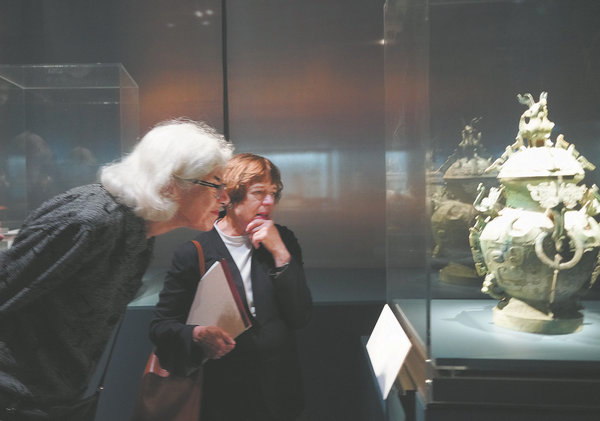

"The bronze work that they did — it's hard to replicate that today. It's so intricate, and just the idea that people were buried with these things!" she said.
One of the pieces that Kaahn recommends to visitors is the 16 writhing dragons that resemble snakes, which make up the base of a drum from the tomb of the Marquis Yi of Zeng (433 BC).
Other highlights include the ornament with a design of two raptors on a mask (2200 BC), the oldest piece on view and the bronze double-walled square jian-fou cooler, a technological marvel.
The jian-fou was also found in the marquis' tomb. The cleverly engineered vessel-within-a-vessel could keep refreshments, like millet ale, cool for lavish festivities during warm months — and was perhaps the first metal cooler in recorded history.
The exhibition has garnered significant interest, attracting visitors from all walks of life. Huiqi Demke, an 11-year-old visitor from Utah, is eager to learn more about Chinese history.
"I've been studying Chinese for five years, and I'm always fascinated by Chinese culture," she told China Daily. "This is an amazing opportunity to learn and share what I see here with my classmates."
Zhou Maoyi, deputy Chinese consul general in San Francisco, emphasized the exhibition's role in fostering cultural exchange.